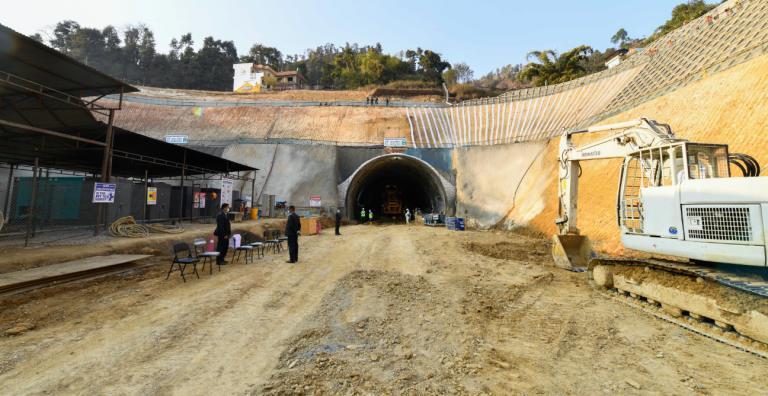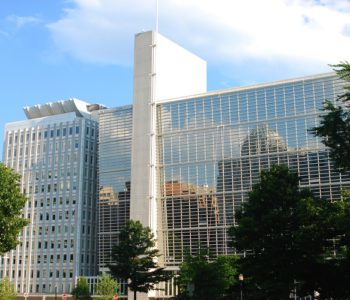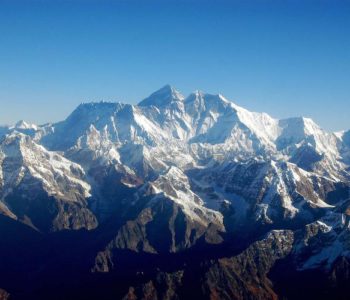Govt resumes Nagdhunga Tunnel construction with Police deployment amid protests

KATHMANDU: The construction of the Nagdhunga Tunnel, a critical infrastructure project aimed at easing connectivity between Kathmandu and surrounding regions, has resumed after a month-long halt caused by local protests. The government deployed 70 to 80 police personnel on Sunday to ensure work could continue, following disruptions that began on March 17, 2025 (Chaitra 3, 2081), according to project officials.
The project, led by Senior Divisional Engineer Sanjay Panthi, faced significant setbacks due to protests by locals raising eight demands, including compensation for damaged homes and sustainable drinking water solutions. Panthi revealed that the stoppage derailed the project’s timeline, forcing the cancellation of planned tunnel testing and international expert visits. “The protests halted work for a month, costing us NPR 130 million over 26 days,” he said, emphasizing that the disruption threw schedules into disarray.
To restart construction, the Ministry of Physical Infrastructure and Transport, two weeks prior, requested the Home Ministry to deploy security forces. On Sunday, police from Thankot, Kirtipur, and Kathmandu Valley offices were mobilized. However, tensions escalated as clashes broke out between protesters and police, leading to the detention of 18 locals for vandalism and obstructing work, Panthi confirmed.
The Japanese contractor, Hazma Ando Corporation, has demanded NPR 130 million in compensation, citing daily losses of NPR 5 million during the 26-day standstill. Panthi acknowledged the right to protest but criticized the complete halt of work, stating that the government would make the final decision on unresolved issues.
Local Grievances and Demands
Locals, led by figures like Gopi Surkheti, former ward chairperson of Chandragiri Municipality-2, accused the project of ignoring their concerns. Their demands include long-term drinking water management, compensation for 93 damaged houses and 60 additional affected structures, guaranteed employment, and redirecting water from dried-up springs in western Dhading. Surkheti noted that temporary water solutions, like deep boring, were provided earlier, but sustainable measures remain unaddressed.
Lavaram Subedi, acting ward chairperson, highlighted the acute water crisis affecting 500 households, costing NPR 300,000 monthly. He expressed concerns about post-construction water supply and noted that dried springs have devastated local agriculture, with losses in the billions. Despite promises to address demands in cabinet meetings and four rounds of talks with former ministers Prakash Jwala and Raghubir Mahaseth, no resolution has been reached, locals claim.
Project Challenges and Future Outlook
Panthi stated that half of the demands, including compensation for water and some damaged houses, have been addressed, while others are under review. However, he stressed that impractical demands cannot be met. The project has suffered significant financial and logistical setbacks, with a revised timeline now under preparation.
The Nagdhunga Tunnel project includes remaining tasks like the evacuation tunnel, floor concreting, approach roads, flyovers, and landslide protection walls. Initially slated for completion by October 2025 (Ashoj 2082), the timeline is at risk due to ongoing protests, the project office warned.
Tensions and the Path Forward
Locals remain defiant, with Surkheti vowing to continue peaceful protests until their demands are met. “The government’s high-handed approach is unacceptable. Our issues are small but unresolved,” he said. Meanwhile, the government’s decision to deploy police signals its determination to meet the project deadline, even as it navigates complex community concerns.
The Nagdhunga Tunnel, once completed, promises to transform transportation in the region, but its progress hinges on balancing development goals with the legitimate grievances of affected communities. As both sides dig in, the resolution of this standoff will shape the project’s legacy and its impact on local livelihoods.












Facebook Comment